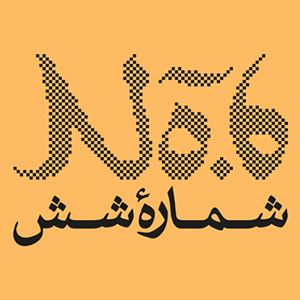 گالری شماره شش
گالری شماره شش
از همان زمان که پدران و مادران گمنام ما نخستین گلهی گاو را بر دیوار غارها تصویر کردند نه فقط آموختند که هنر میتواند «بیان» کند که در عینحال قدرت یگانهی خود در دیدن و تصویر کردن توحش اطراف را نشان دادند و این همان زمانی بود که آنها آرامآرام آموختند تا به مدد هوش خداداد از غارها بیرون بیایند، از همسایگی حیوانات فرار کنند تا تمدن ما را بسازند و از هراس زندگی در طبیعت بیمنطق که بیدریغ دامان ساکنان حیات وحش را میگیرد، بگریزند.
اما از مینوتور تا سانتور، از گرگنما تا خونآشام، یا جن حتی که گاه با سمهایاش بر آدمیان ظاهر میشود و آنها را میترساند، حیواناتی که ما به امید فردایی بهتر رهایشان کرده بودیم، گهگاه به سراغمان میآیند و برای دمی فقط هراس زندگی در طبیعت بیمنطق را به یادمان میآورند. همهی آنها، با پیکرههای نیمه انسانی / نیمه حیوانی نه فقط یادآور نیمهی حیوانی رها شدهی ما در غارها هستند که در عینحال تصویرگر همهی هراسهایی هستند که ما در دل غارها رها کرده بودیم، ولی آنها همچون نفرینی ازلی با ما هستند و میمانند انگار.
حیوان درون میتوان تصویری از همهی اینها باشد؛ تصویر هر هراس شخصی، یا خاطرهای گنگ از گذشته که به مانند رویای زیست آزادانه در غارها در خاطراتمان مانده است. اما بیتردید تصویر یک باور کوچک است که هنر حتماً با درونیترین نیازهای ما پیوند داشته و دارد، همان چیزی که هنر معاصر، به اصرار میکوشد فراموش کند.
حافظ روحانی
آذر 1395
Group photography exhibition titled "Animal Within"
Selected by: Hafez Rouhani, Sogol Kashani, Joubeen Mireskandari
Artists: Raoofeh Rostmi, Zarvan Rouhbakhshan, Mohsen Shahmardi, Namdar Shirazian, Alireza Ghazi, Behnam Sadeghi,Maryam Niazadeh
16 – 23 Dec 2016 | Openinig: Fri, 4-8 pm
No.6 Gallery
Address: Ground floor, No 2, 20th Alley, Mirza Shirazi Street
phone : +982188346029
Since the first time our anonymous mothers and fathers illustrated the first image of the hordes of bulls on the walls of the caves, not only they learned that art has the ability to ‘express’ but they also noticed their own unique power to observe and illustrate the wildness around them. The simultaneousness of the discoveries allowed them to slowly learn and use their innate intelligence to come out of the caves, end the neighboring with the animals to build civilization and run from the fearful life in the lawless nature that shamelessly afflicts the residents of the wilderness.
Yet from Minotaur to Centaur, from werewolves to vampires or goblins who appear upon humans with their hooves and frighten them; sometimes the animals whom we abandoned in hope of a better future pay us a visit and for a moment remind us of the dread of living in the unruly nature. With their half human-half animal bodies, not only they are all memoirs of the animalistic side of all of us, abandoned in the caves; but they are also demonstrations of the dread we left behind in those caves, which seems to be haunting us like an eternal curse.
The inner animal can be a picture of all of these; a reflection of any personal fear, or an obscure memory of the past that has remained in our recollection like a free natural dream in the caves. Yet doubtlessly it is an image of a small belief, that art is undeniablyconnected to our innermost needs; the very thing that contemporary art tries desperately to forget.
Hafez Rouhani


